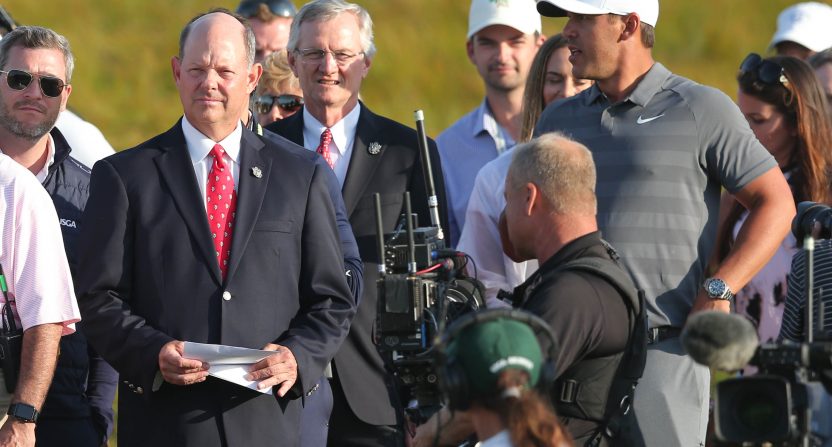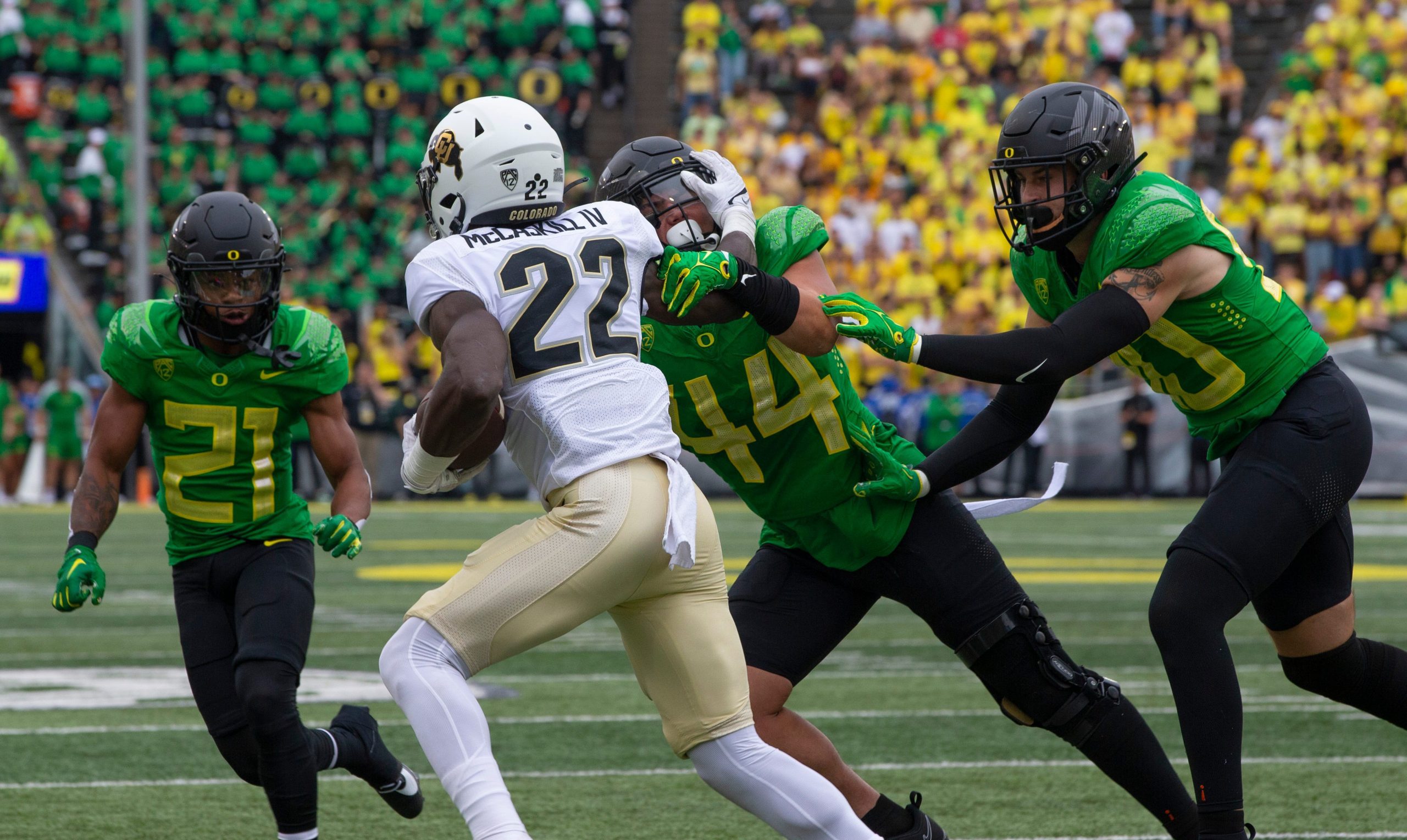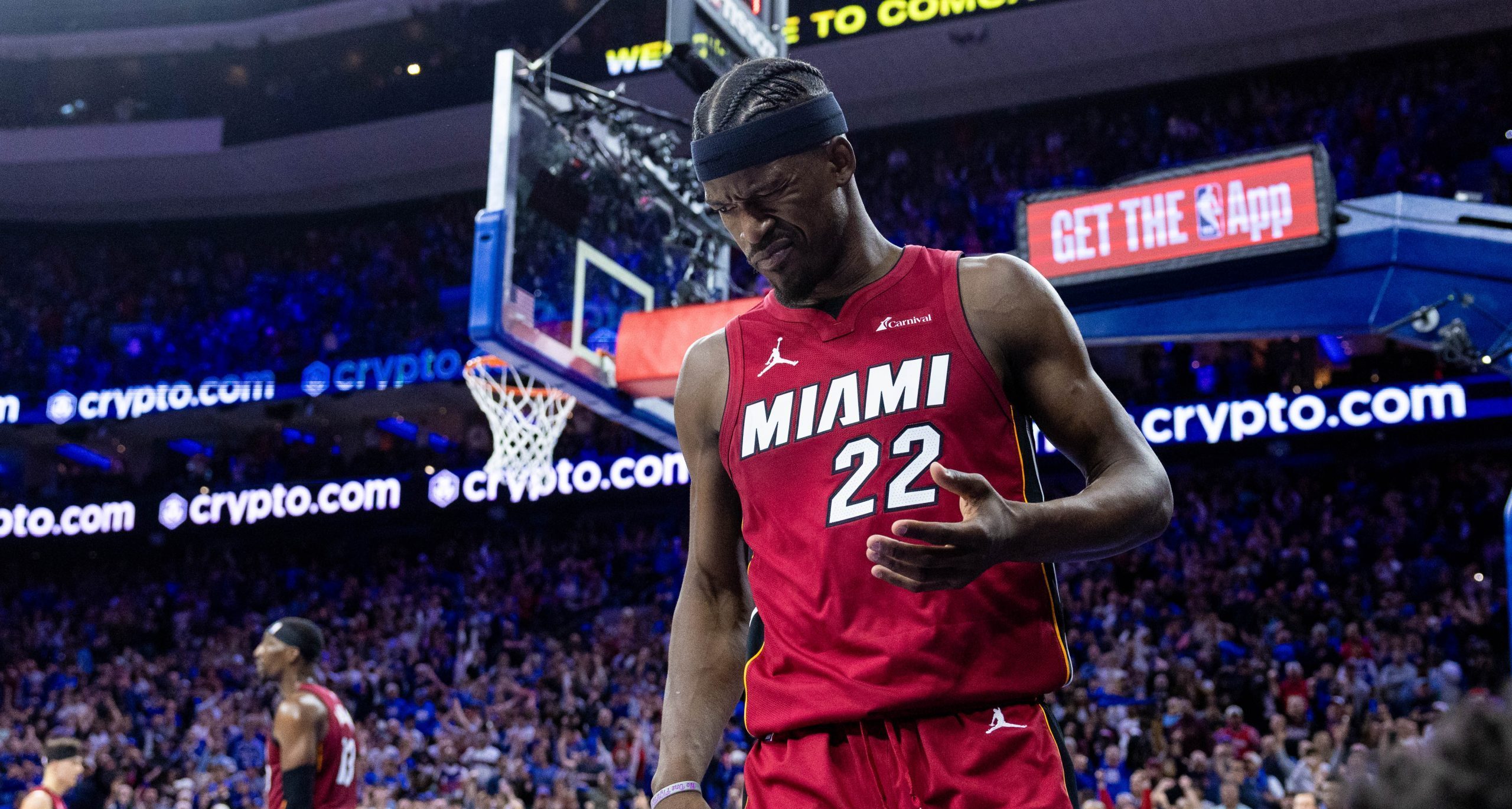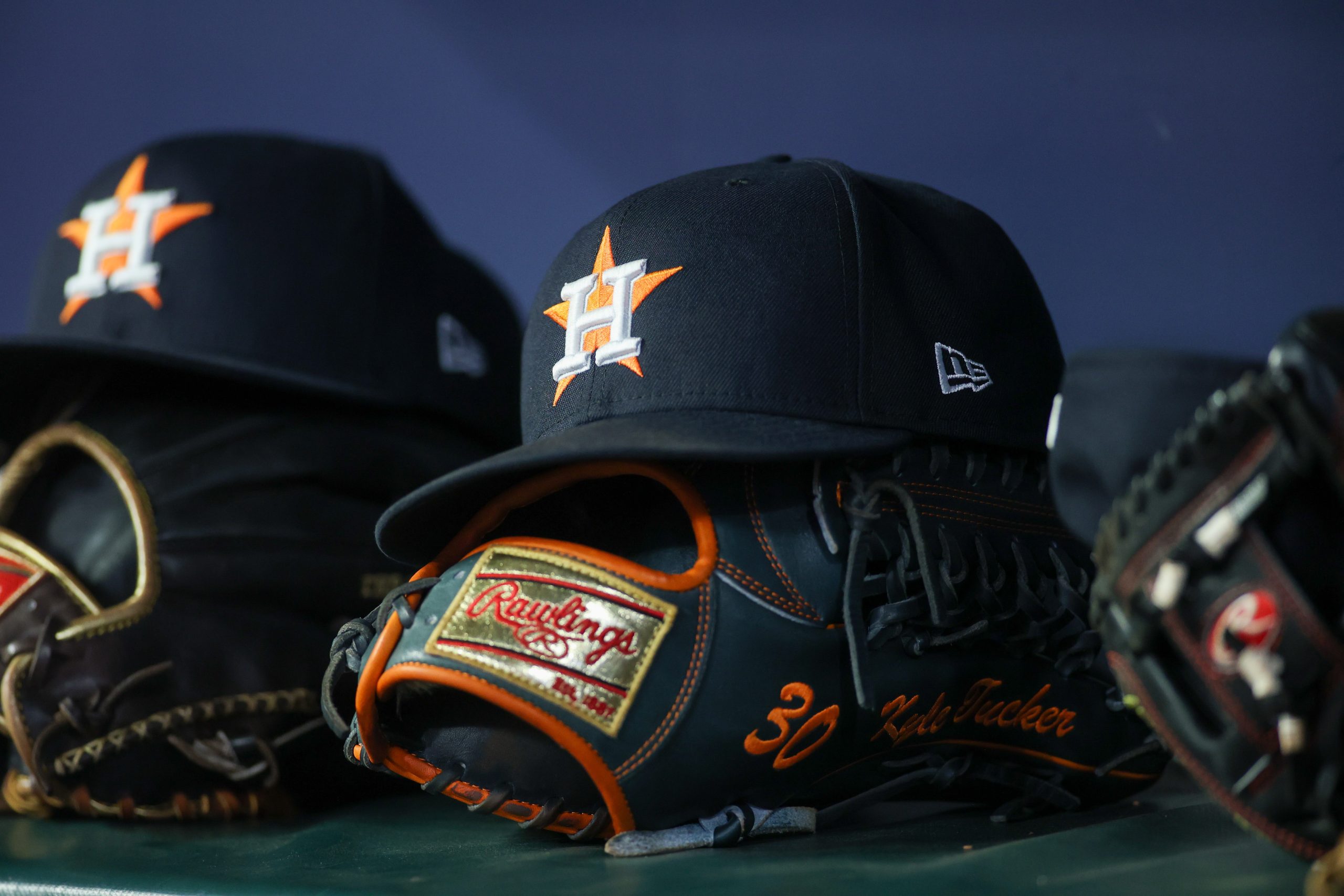If you tuned in for the U.S. Open this weekend, you saw good-to-great golf at every turn.
It didn’t always look like it, though, and if you listened to the broadcast, to players on Twitter, or to any number of commentators, you definitely would have come away thinking you were watching a farce dressed up in fescue. And that’s the problem for the USGA, who preside over golf’s national championship and one of the three most important golf tournaments every year. They’re caught between multiple parties who all have different motives, and they’re victims of circumstances in which they’re both blameless and very much at fault.
One of the most instructive ways to deduce whether or not a golf tournament is providing a fair test of skill is reverse engineering the leaderboard. If the leaders down the stretch on Sunday are a random collection of names and nobodies, you have a setup that’s either so tacky as to be random or so easy as to be a pushover. Yesterday at Shinnecock Hills, the U.S. Open featured Dustin Johnson, Tommy Fleetwood, Justin Rose, Patrick Reed, Henrik Stenson, and eventual champ Brooks Koepka, all of whom reside inside the top fourteen of the world rankings.
A two-putt bogey on the 72nd hole does it. @BKoepka is the 118th #USOpen champion, and the first back-to-back champion since 1989! pic.twitter.com/DaWUiRGHCw
— U.S. Open (@usopengolf) June 17, 2018
Other names in contention included Daniel Berger and Tony Finau, up-and-coming players who perpetually populate lists of potential breakout performers, and who are now both ranked in the top forty. Former U.S. Open champ (and current Players champion) Webb Simpson was hanging around, as was current world number twenty-three Tyrell Hatton and reigning PGA Tour rookie of the year (and twenty-fourth ranked player in the world) Xander Schauffele.
That was your top-ten at the end of the tournament. It was a U.S. Open that produced an obviously stacked leaderboard, with an outcome in doubt until the final few holes, a record-tying Sunday scoring performance (Tommy Fleetwood’s 63 that enabled or forced him, depending on perspective, to sit in the hospitality tent with the clubhouse lead for hours), and an historic winner in Koepka, the rising American star who became only the third person to win consecutive U.S. Open championships since World War 2, and the whole thing was contested on one of the best classic courses in the United States.
You’d think all of that would have bought the USGA some goodwill, but no! Instead, what we got were plenty of flaming takes, like this from Brandel Chamblee, Frank Nobilo, and David Duval on Golf Channel (the real fun starts at about the 1:30 mark):
And the thing is, despite all of the positives from the event above, the criticisms aren’t without merit! Because while this U.S. Open did offer the robust leaderboard that’s normally a telltale sign of a good test, there were also plenty of moments seemingly made to incite the best jokes #GolfTwitter has to offer. Foremost among them: Phil Mickelson providing what may well be the tournament’s enduring memory on Saturday, when he ran around a moving putt to slap it back towards the hole before it came to rest:
Mickelson went on to explain he knew exactly what he was doing (exploiting a rule in an effort to save some strokes), a move seemingly designed as a dare to the USGA to disqualify him over the move, which they didn’t do. It wouldn’t be the last time the USGA backed down on the weekend.
Saturday also featured a course setup that, depending on who you want to believe, was either well beyond unfair or just fine with the exception of a few pin placements. What was clear, though, was that it was a completely different course for players starting earlier in the day; Finau and Berger each carded a 66, and then sat and watched while literally everyone else on the leaderboard above them fell backwards, to the point that they went out in the final group together on Sunday.
That essentially never, ever happens on tour, and while some other sports might embrace that sort of oddity, there’s no group of people on the planet less equipped to applaud something weird happening than professional golfers and professional golf pundits. Watching the broadcast, it was certainly obvious that the course was playing much more difficult in the afternoon, with the wind picking up and the course firming to a level perhaps slightly beyond what USGA chief Mike Davis and the rest of his staff were expecting.
Zach Johnson seems to have made his mind up on the ‘have they lost the course’ question @NoLayingUp @TronCarterNLU pic.twitter.com/E9VkWvPMAL
— UK Golf Guy (@ukgolfguy) June 16, 2018
There is some obvious irony to the situation and the outcry that are illustrative of the bind the USGA is in. When the USGA went to Erin Hills last year for a tournament that saw Koepka win with a winning score of -16, they were villified by a large portion of fans and media who have come to view the U.S. Open as an event that should be the most difficult test of the year for players. This ignores an important point: par is irrelevant, and jumping from what was supposedly the easiest iteration of the U.S. Open to a setup that was unfairly difficult for 3 days resulted in the same guy winning with a total score just nine shots worse.
That the USGA could go from being mocked for betraying their roots and staging an event that was too easy to betraying the game itself by staging an unfair test that embarrassed players in just one year is exactly the problem they face; they’re stuck between the proverbial immovable obstruction and a hard place. The thing is, in 2018, it’s basically impossible to push the world’s best players to or above par (which, again, should be irrelevant to this) over four days without pushing the limits of a golf course, especially a classic design like Shinnecock. On the other hand, whose fault is that if not the USGA’s?
As Brandel notes in the video above, the USGA is the group responsible for governing the game, and it’s tough to feel sympathy for them the one week each year they have to directly deal with the fallout from their hands-off approach to distance in modern golf. But at Shinnecock specifically, there was another factor in play. The 2004 U.S. Open was the last staged at this course, and 2004 actually was the unmitigated disaster players would have you believe 2018 was. The USGA essentially lost the seventh green, with players putting off it repeatedly and balls refusing to come to rest around the hole.
It was so bad that last week, they felt the need to put out this video, which feels like a three-minute version of the Facebook apology ad that’s currently running:
It was that disaster in 2004 that perhaps most informed their response to Saturday’s outcry, which was nowhere near as bad as fourteen years ago. Mike Davis assessed the situation essentially the same way Batman assessed Superman in Dawn of Justice: if there was even a 1% chance Sunday could turn into 2004, they had to treat it as a certainty. That was unfortunate, but it was cynically understandable; when you’re going to get criticized from all sides no matter what you do, it’s natural to turn to the path of least potential blowback. It’s why NFL coaches punt on 4th and 1 at midfield.
The USGA’s version of punting was overwatering, taking the teeth out of the course for the morning with hopes that it would still be somewhat more receptive by the time the leaders played through.
Ironically that helped to set up Fleetwood’s 63, and as things firmed up more throughout the day, Fleetwood’s round very easily could have held up as a winning score. That would have opened the USGA up for even more criticism on the “different course in the morning” front. It’s unfortunate for players like Koepka, who even with two majors now has the ruthlessly efficient game and relatively bland public face that creates a take vacuum begging to be filled with extracurricular points in the wake of this tournament.
It really is impossible for the USGA to please everyone. Modern players view rounds in the upper 70s as embarrassing, and feel entitled to birdie opportunities on every hole. Modern media is divided between various camps, including a vocal subset that views the U.S. Open as a traditionally difficult test that requires punishingly thick rough and high scores, and another subset that thinks exactly the opposite, with a wide spectrum in between.
But when you start to feel sorry for the USGA, you remember that they’re at least indirectly responsible for a large number of the problems they face every year. They don’t take heat for things like the ball and equipment being out of control except for the annual bashing of the U.S. Open setup. It’s the one referendum on the matter, and it’s not even a direct rebuke. All of this adds up to one obvious fact: that no matter what happens next year at Pebble Beach, the USGA isn’t going to win.
Mike Davis just has to hope the they don’t get blown out.






